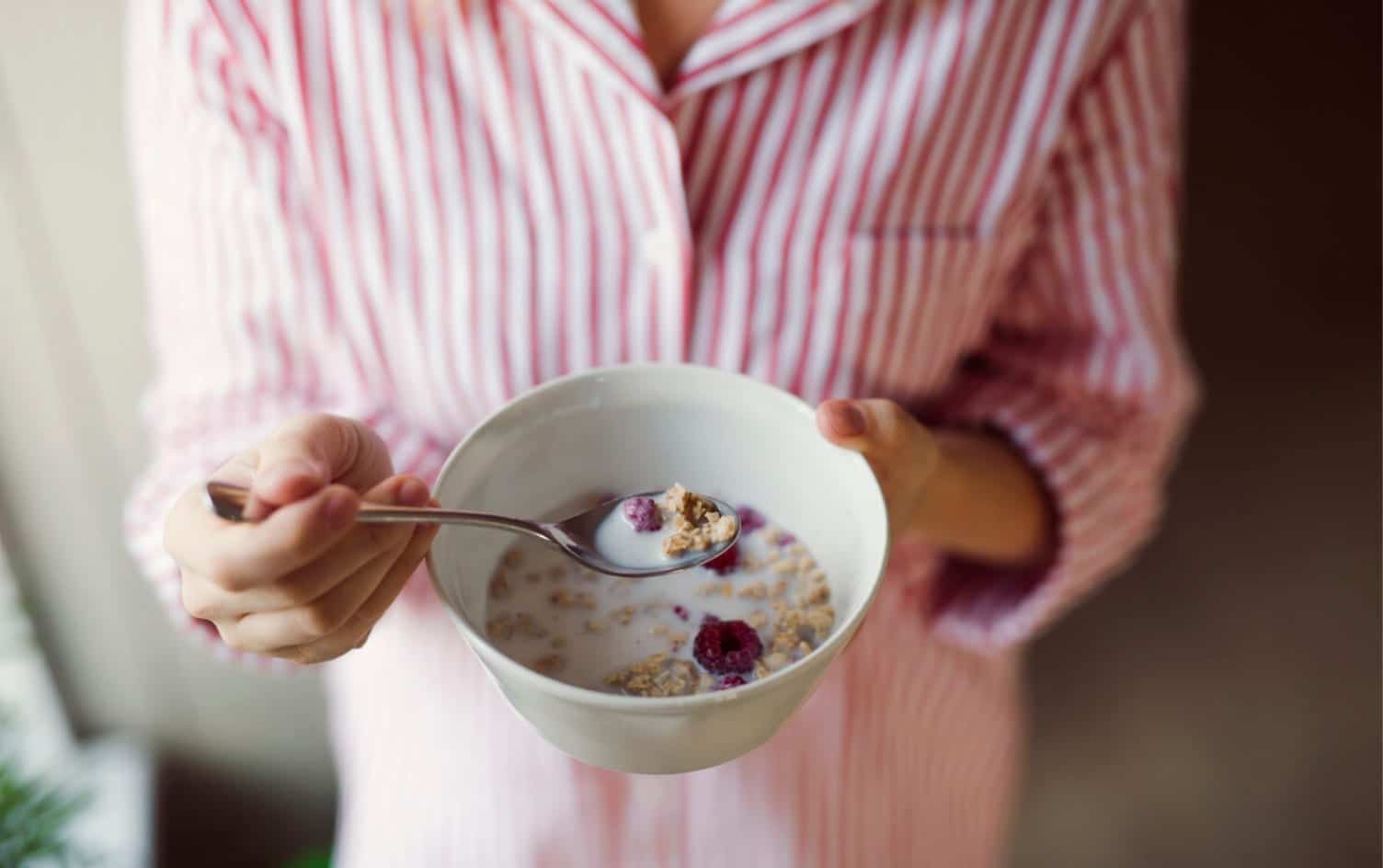Cereal is a popular breakfast food, but it can be highly processed — often loaded with added sugars and refined carbs, which can cause blood sugar spikes and leave you feeling hungry a few hours later.
Still, no food should be entirely off-limits, and there are some cereals that can be considered healthy thanks to their nutrition profile or what you can add to them. In fact, some types of cereal can provide important under-consumed nutrients like vitamins A, D, E and C as well as folate and magnesium. Research shows consuming cereal is especially helpful for populations such as the elderly who often do not get enough of these nutrients and it could even help with brain health.
WHAT TO LOOK FOR WHEN CHOOSING A HEALTHY CEREAL
IS THERE ENOUGH PROTEIN?
Protein is one of the most important, satiating nutrients that can help keep you satisfied and energized for longer. It can also help keep blood sugar steady to avoid crashes that leave you feeling fatigued and cranky. For breakfast cereals, it’s best to look for protein content around 4–5 grams per serving or more. In addition, consuming cereal with milk or yogurt that also contains adequate protein can further promote satiety and get you to around 15–25 grams for the meal.
The highest protein-containing milks are cow’s or soy (about 8 grams per cup), or a Greek yogurt (around 20 grams per cup). If using a lower protein milk like almond or coconut with cereal, try having another protein on the side, like a hard-boiled egg, to round out the meal.
IS IT A GOOD SOURCE OF FIBER?
Fiber ranks right up there with protein in terms of its satiety-promoting benefits. What’s more, fiber helps keep us regular and contributes to a diverse, healthy gut microbiome, which is a key regulator of our immune system. Most of those sugary, ‘dessert’ cereals are pretty low in fiber, which is another reason why we need so many bowls to fill us up.
When reading nutrition labels for fiber content, aim for at least 4–5 grams per serving or more (just like protein, so it’s easy to remember). I also recommend adding fiber and antioxidant-rich fruits to cereals, such as blueberries, raspberries or blackberries. These add flavor and offer a nutritional punch.
IS THERE MINIMAL SUGAR?
Eliminating sugar completely is close to impossible and unnecessary, but it can be helpful to keep added sugar low and around the recommended daily limit (6 teaspoons, or 25 grams) or less. Some cereals can be sneaky, and contain more than half of this amount in just one serving. Unless you’re having a small bowl of sweet cereal for dessert, aim for added sugar content in cereals to the mid-single digits, around 5–7 grams per serving.
The new guidelines on nutrition facts labels set by the FDA have started to go into effect this year, which requires food companies to list added sugar on nutrition facts labels. This makes it easier to distinguish naturally occurring sugars (such as fructose in fruit or lactose in yogurt) from added sugars.
WHAT CAN YOU ADD?
I always encourage thinking about what we can add to our meals to make them healthier, as opposed to what we can remove. Even if your cereal checks most of the boxes above, you don’t have to stop there. It’s still possible to boost antioxidant, fiber, protein and healthy fat content of our favorite cereals by topping them with:
Nuts: Sprinkle your favorite nuts on top of your cereal for extra crunch and blood sugar-stabilizing, anti-inflammatory healthy fats. Just watch the calories.
Chia or hemp seeds: Toss a tablespoon on top of cereal to pack more healthy fats, protein and fiber to your meal.
Berries: Mix any kind you like to boost antioxidants, vitamins and fiber.
THE BOTTOM LINE
Aside from varying nutrient profiles, it’s important to keep the big picture in mind when determining whether cereal is healthy for you at a given moment. Is it a satiating breakfast that keeps you full until lunch? Great. Is it taking the place of vegetables, lean proteins, legumes, and other whole grains at lunch or dinner because of poor planning? Maybe it’s time to re-evaluate priorities and go to the grocery store or farmer’s market. Is it quick and comforting after a late work night once in a while? Or a tasty dessert? Go for it. Just like any other food, cereal can absolutely be a healthy part of a varied, well-balanced diet.




